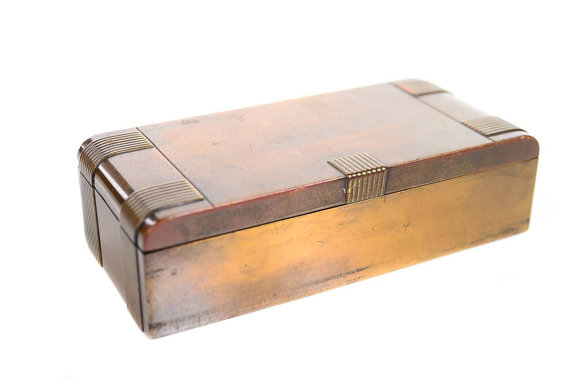-
Posts
59 -
Joined
-
Last visited
Content Type
Profiles
Forums
Articles
Gallery
Downloads
Events
Posts posted by David Durman
-
-
Thanks for the replies! Very helpful!
-
They don't have a rolling mill. Honestly, that thickness was just something I estimated based on that example image; I'm not married to it particularly, it just seemed a reasonable thickness. What would be a reasonable thickness for casting?
I haven't talked to the professor or the student teacher yet; I have a lot of things I want to do in the class and it only meets from 6 to 9 every Thursday for eight weeks. In essence I'm trying to work out as much of my planning as I can outside of class so I can maximize my shop time; I'm certainly going to check with the professor, but I want to have a solid plan.
I was partial to using mild bronze because I have already ordered copper and tin ingots to make classic bronze for another project in the class; had the idea of sticking to traditional materials since I am already using one. Should I just order silicone bronze sheets and weld it? That seems like less complicated work but more shop-time-consuming. Additionally, unless I'm just looking at the wrong sites, ordering silicone sheets seem significantly more expensive than making my own bronze. Am I mistaken? Again, thanks for answering!
EDIT: By casting it at that wall thickness, I hadn't meant casting the complete box shape. I meant casting each wall individually (a total of 5 plus the lid) and welding them together. I asked about casting it whole mostly to gauge whether or not that was a realistic wall thickness for a whole cast. I realize I wasn't particularly clear, my apologies.
-
Additionally, I had planned on a wall thickness of approximately 1/16 in; is this appropriate or should I change it?
-
I am taking a metalworking class at my local university and am planning, amongst other things, casting two jewelry boxes, one for each of my daughters. I'm planning on making them out of mild bronze, and they will be approximately 7 inches long by 3 inches wide by 3 inches deep. Should I cast the individual plates and later weld them together, or can something this size simply be casted in two pieces, namely the box and the lid? Would it make more sense to simply cast ingots and beat them into plates? Thanks for any help!
(Attached is an image of the basic design I am going to attempt to recreate.)
-
Thanks! I'll probably just cut out a knife blank from the 52100 and grind out a kitchen knife for now.
-
I'm taking a Metal Working class at the local University. The shop is amazing, but there is little guidance in the class; they have a schedule but the professor clarified at the first class that the eight weeks really focus on what the students want to do (if everyone wants to blacksmith, they focus on that, if everyone wants to cast bronze, they do that). There are two bronze castings I already plan on doing, but the one project I'm iffy on with my time there is trying to at least make a damascus billet, if not a new kitchen knife if time allows. I have a 4 ft piece of 2"x1/8" 52100 steel I got from New Jersey Steel Baron, but I don't really have any other HC steel on hand; I can order some 1084 or something similar, but it occurred to me that my current kitchen knife (that desperately needs replacing) is Stainless Steel, so I was wondering if I could use it with the 52100 for damascus. As far as I know there shouldn't be a problem, but I'm an amateur so I was hoping someone would have experience with this. Thanks for any help!



Bronze Jewelry Box - Cast Whole or Plates?
in Copper Alloys
Posted
Just a quick update if anyone is curious: I'm going to be using the silicone bronze he has in the shop for these boxes which I am going to make with 1/8" walls. He feels fairly confident that we can cast that with a low chance of failure. Does anyone have an opinion on how the box and lid should be orientated in the sand?
Also, we made my take on classical bronze (12.5% tin) last week, casting three small ingots. I'm pretty pleased with the high blonde color it came out with. Here is a picture after a quick clean-up: